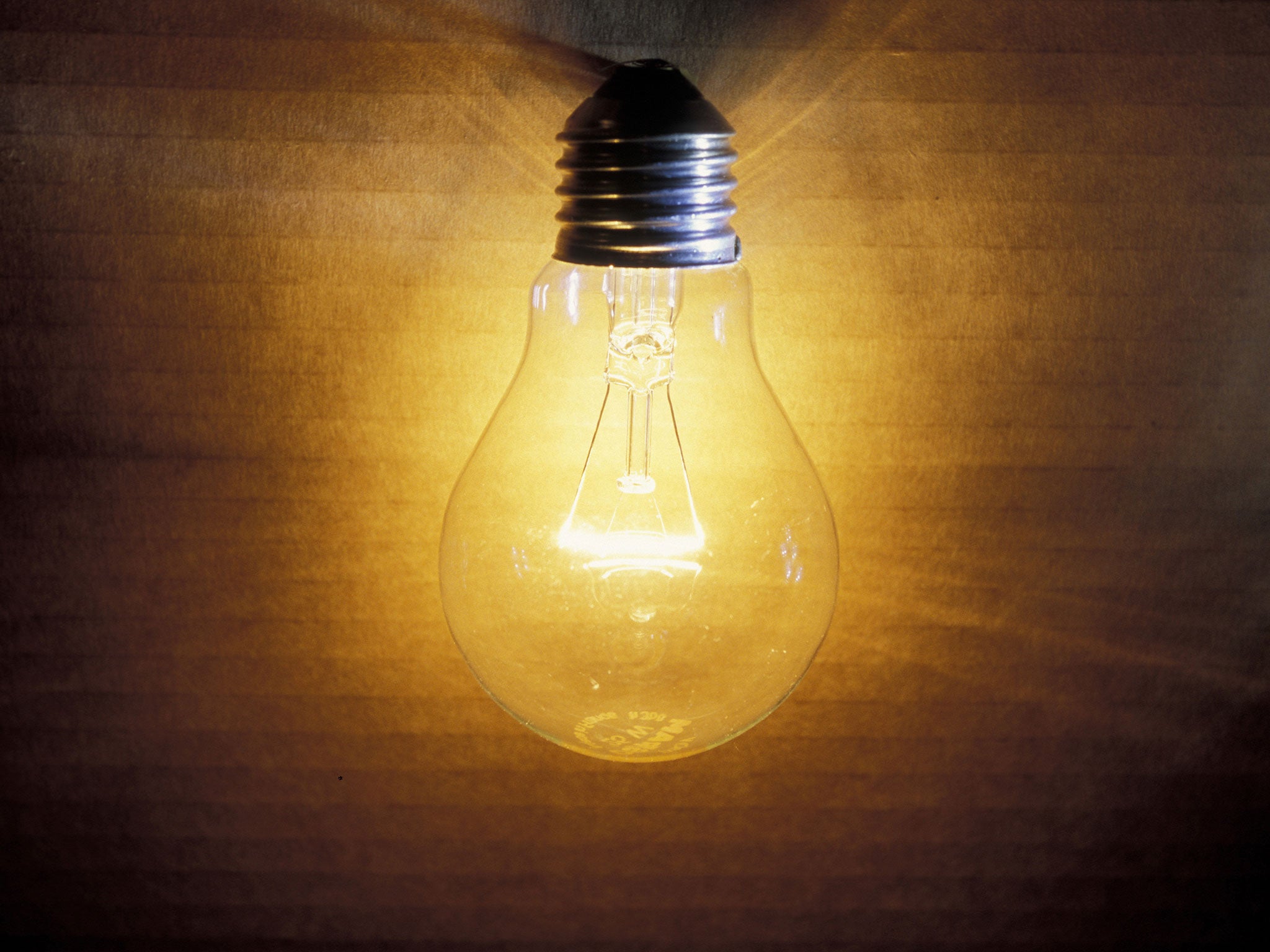Old-fashioned light bulbs could be set for comeback after 'light recycling' breakthrough
Older electric bulbs can no longer be sold in Britain and the rest of the EU due to their inefficiency

The warm glow of an old electric light-bulb, which has been banned in many countries because it is so energy inefficient, may soon be making a comeback following a breakthrough in “light recycling”.
Old-fashioned electric light bulbs can no longer be sold in Britain and the rest of the EU. They have been replaced by more efficient compact fluorescent bulbs and the newer light-emitting diode (LED) bulbs – but that could soon change with the invention of a hyper-efficient incandescent light bulb.
The problem with older light bulbs, which have not changed in their basic design since the days of Thomas Edison more than a century ago, is that they generate light by heating a thin filament of wire to very high temperatures.
This unfortunately means that about 95 per cent of the electrical energy used to power a light bulb is converted into heat and only 5 per cent into visible light, making it one of the most inefficient methods of lighting up a room.
As the heat is given off as infrared light, which is invisible to the human eye, about 95 per cent of the electricity used in lighting was therefore wasted. This is why governments around the world, from Argentina to South Korea, decided to phase them out to save energy.
However, a team of researchers from the Massachusetts Institute of Technology (MIT) have devised a way of capturing the infrared heat released when the tungsten filament of an incandescent bulb is heated to about 2,700C, and converting this waste energy into visible light.
The researchers built a secondary structure around the incandescent filament which reflected the infrared light given off by the heated wire back to the filament where it is re-absorbed and then re-emitted as visible light. Because the secondary “filters” are not in direct physical contact with the hot filaments they are not destroyed by the high temperatures.
The scientists have called the technology “light recycling” because it takes the useless wavelengths of infrared light, which no-body can see, and converts them to visible light.
“It recycles the energy that would otherwise be wasted,” said Marin Soljaci, professor of physics at MIT and a senior author of the study published in the journal Nature Nanotechnology.
In order for the device to work, the scientists had to redesign the traditional incandescent filament of the old light bulb.
“In a regular light bulb, the filament is a long and curly piece of tungsten wire. Here, the filament is laser-machined out of a flat sheet of tungsten: it is completely planar,” said Peter Bermel, a member of the MIT team.
Professor Soljaci said: “It is the combination of the exceptional properties of the filter and the shape of the filament that enabled substantial recycling of unwanted radiated light.”
The secondary filtering device makes a dramatic difference in how efficiently the new kind of bulb converts electricity into light.
The efficiency of conventional incandescent lights is between 2 and 3 percent, while that of fluorescents is currently between 7 and 13 percent, and that of compact LEDs between 5 and 15 percent, the MIT scientists said.
In contrast, the prototype device has so far reached about 6.6 per cent efficiency, which is a threefold improvement on existing incandescent light bulbs, but with further design improvements it should be possible to reach 40 per cent efficiency, they said.
A feature of the new incandescent light is that it retains the ability to light up objects in “near-ideal colours”, which imparts the warm glow that is often missing with fluorescent lighting and LEDs, the scientists said.
That was one of the reasons why incandescent lights remained dominant for so long – their warm light has remained preferable to drab fluorescent lighting for decades, they said.
Join our commenting forum
Join thought-provoking conversations, follow other Independent readers and see their replies
Comments
Bookmark popover
Removed from bookmarks